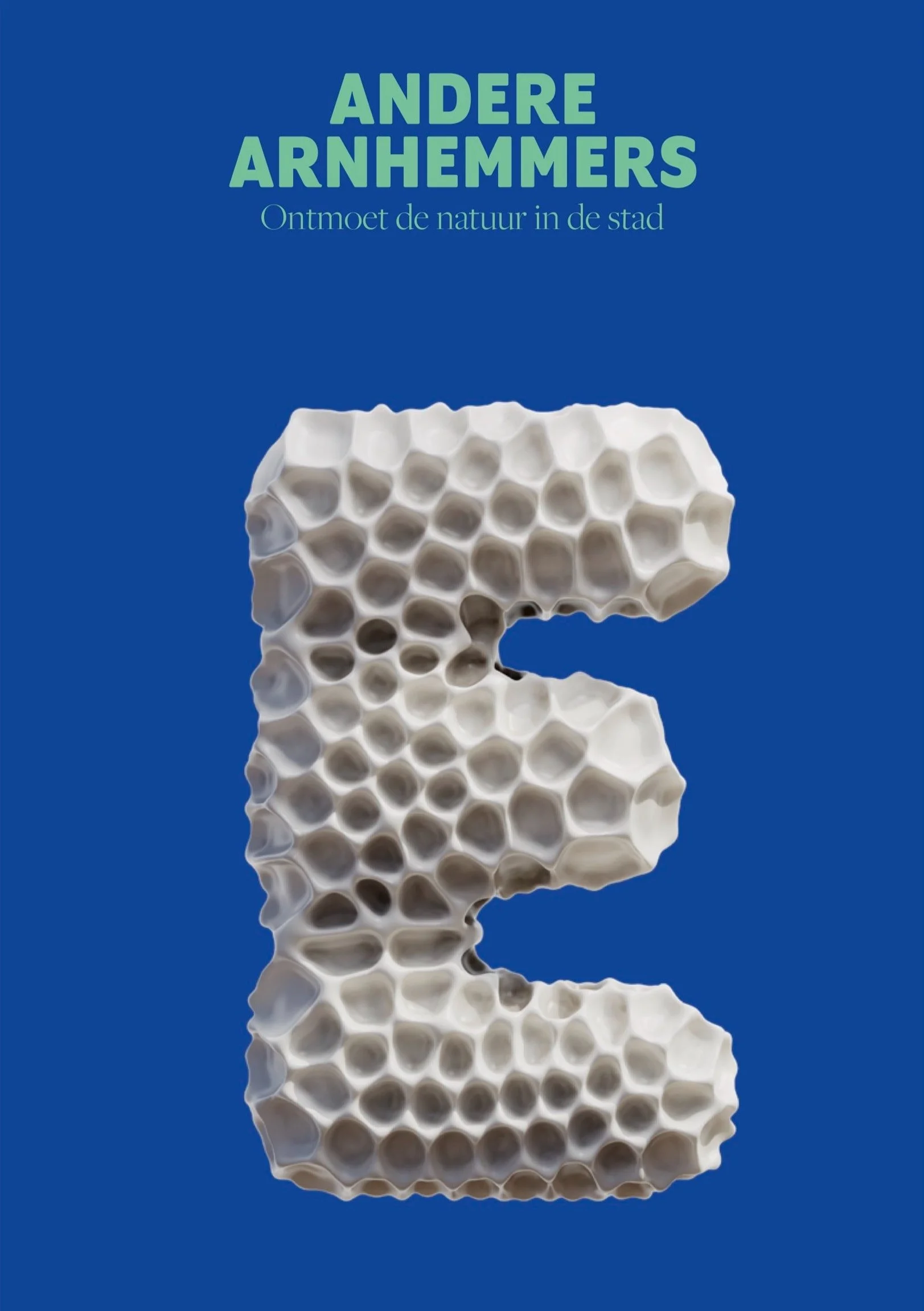
Team
Creative concept: Marjolein Pijnappels, Barbara Wagensveld
Design: Maya Knepflé, Dana Dijkgraaf, Pawel Grezlak
Collabs: Gemeente Arnhem, Netwerk Groen Arnhem, Arnhem City Marketing, Natuurcentrum Arnhem
The city as multi-species ecotope
Urban ecology is no longer a fringe field of ecology. Scientists have found high levels of biodiversity in cities and some species even seek out the city as habitat - humans of course, but also peregrine falcons and other birds. The notion of the city as a multi-species ecotope, not in opposition to nature, but nature itself, is what fuelled the Andere Arnhemmers (Other Inhabitants of Arnhem) project. When we get to know these others we can cooperate better to make cities more balanced, habitable spaces.
The project’s first aim was to inform the human inhabitants of Arnhem that their city is an ecosystem and they themselves part of the intricate web of relations within it. We collected stories linking human and other-than-human inhabitants that told of the wondrous world of night time bat commutes, talking trees and underground rivers.
Andere Arnhemmers was a joint effort between Studio Lakmoes, Dana Dijkgraaf Design, the Green Network Arnhem and Arnhem Municipality to create stories and experiences that connect the human and other-than-human inhabitants of the city of Arnhem. Marjolein was one of the initiators and responsible for the overarching narrative.






Forget what you think you know about nature, about cities, about yourself. Open up to the notion that you are nature and cities are ecosystems.
In a yearlong campaign we created stories about Other Arnhemmers, like the Sonsbeek Park beeches who use an underground fungal internet to talk to each other, bridges of flowers connecting bee communities across cities and peregrine falcons choosing towers over cliffs and calling cities their home and humans their neighbours.
Our stories show how intricately humans and other city dwellers are connected with each other.
The story of the perfect pear
The fruit from the local urban farms are pollinated by local bees, without whom we wouldn’t have anything to eat at all. Only when pollination is completed to perfection (i.e. pollinating all five stigmas of the flower) does a perfectly round pear come to be.
The story of the flower bridge
The towns of Arnhem and Velp are building a flower bridge connecting the two urban areas with a bee highway. The solitary knautia bee depends on the declining knautia plant for its nectar. The knautia bridge will allow bees to forage for longer distances and establish themselves in urban areas.
The story of the caring mushroom
The fungus Amethyst deceiver connects adult beech trees to saplings in Sonsbeek Park. This way nutrients are distributed through the park’s forest that form a true green haven for humans and animals alike at the heart of the urban area.
Reshaping the city as a nature reserve in our mind requires tools. Our Urban Nature Map shows green hotspots and locations where Other Arnhemmers might be found, inspiring citizens to find them on their own.

When fashion and design meet nature
Collaborating with the amazing art director Dana Dijkgraaf and 3D artrist Pawel Grzelak we created with the Studio Lakmoes team an awesome campaign look and feel, borrowing from the realms of fashion, design and nature. The colorful style reminds more of the realms of fashion and design than the natural world, but all textures and colors are indeed from nature. Transformed into different shapes, zoomed in to the tiny details we hope to evoke again the wonder of the ordinary world around us, and teach humans how ordinary beings like the dandelion play an indespensable role in our city’s ecosystem.











